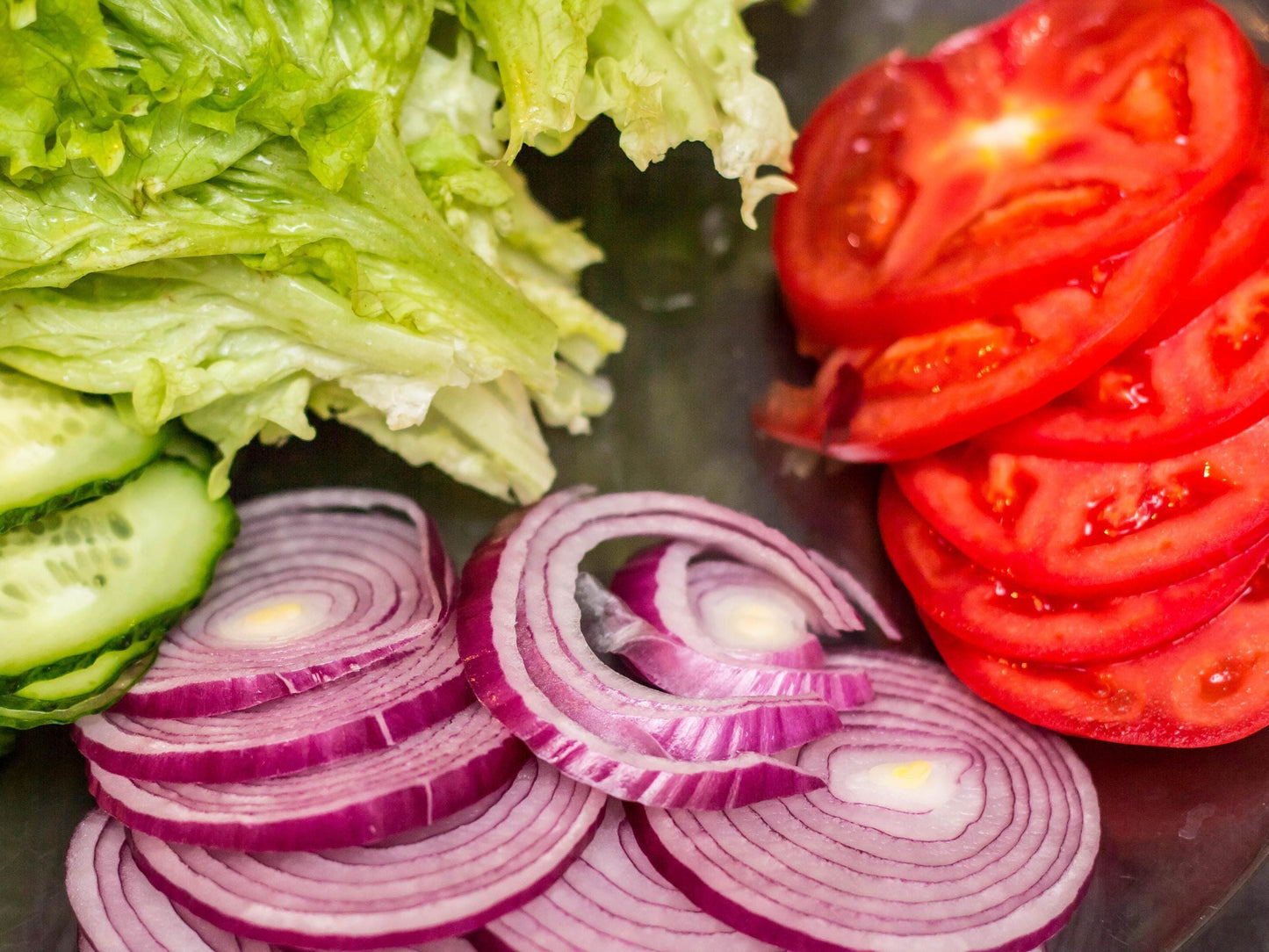Gardeners appreciate Abe Lincoln for its strong disease resistance and crack-resistant skin, making it a reliable choice for organic growing. This variety is indeterminate, meaning it will continue to produce fruit throughout the growing season, providing an abundant harvest.
Originating from Illinois and introduced in 1923, this variety was named in honor of President Abraham Lincoln, reflecting its American roots and enduring popularity. Despite the rise of hybrid tomatoes in the mid-20th century, the Abe Lincoln Tomato has remained a garden favorite.
This variety thrives in full sun and well-drained soil, with plants reaching heights of 5-7 feet. It's well-suited to a range of climates within USDA zones 3-10, particularly those with warm, sunny conditions. The plants require staking or caging to support the heavy fruit load and benefit from regular watering and mulching to maintain consistent soil moisture.
The Abe Lincoln Tomato is a versatile and historically significant variety that continues to be valued for its dependable production and flavorful fruit.
Common Names: Abe Lincoln Tomato
Latin Name: Solanum lycopersicum 'Abe Lincoln'
Type: Vegetable (Tomato)
Life Cycle: Annual
USDA Zones: 3 - 10 (grown as an annual)
Stratification: Not required
Germination Ease: Moderate
Sunlight: Full Sun
Moisture: Prefers consistently moist, well-drained soil
Soil: Rich, well-drained soil with a pH between 6.0 and 6.8
Height: 5-7 feet (indeterminate vine)
Spread: 2-3 feet
Color: Red
Bloom Season: N/A (grown for fruit)
Companion Plants: Suitable companions include basil, marigolds, carrots, and onions.
Potential Toxicity: Non-toxic to humans and pets (however, tomato plants can be toxic to pets if large amounts of the foliage are ingested)
Climate Adaptability: Adaptable to a range of climates within its USDA zones; thrives in warm, sunny conditions
~ Sowing ~
When to Start Inside: Start seeds indoors 6-8 weeks before the last expected frost date in your area.
When to Start Outside: Transplant seedlings outdoors after the danger of frost has passed and nighttime temperatures are consistently above 50°F (10°C).
Sowing Instructions: Sow seeds 1/4 inch deep in seed-starting mix or sterile potting soil.
Planting Depth: Sow seeds 1/4 inch deep.
Watering: Keep the soil consistently moist but not waterlogged.
Light and Temperature: Seeds require warm soil, ideally between 75-85°F (24-29°C), to germinate. Once seedlings emerge, they need plenty of light to grow strong.
Germination: Seeds typically germinate in 7-14 days under optimal conditions.
~ Transplanting Seedlings Outdoors ~
Timing: Transplant seedlings outdoors when they have at least two sets of true leaves and after the last frost date.
Location: Choose a location with full sun and well-drained soil. Tomatoes thrive in a spot that receives at least 6-8 hours of direct sunlight per day.
Spacing: Space plants 24-36 inches apart to allow for proper air circulation and growth.
Transplanting: Harden off seedlings by gradually exposing them to outdoor conditions for 7-10 days before transplanting. Transplant deep, burying the stem up to the first set of leaves to encourage a strong root system. Water well after planting.
~ Growing ~
Watering: Water regularly, keeping the soil evenly moist. Avoid overhead watering to prevent fungal diseases. Mulch can help retain soil moisture and prevent soil-borne diseases from splashing onto the foliage.
Fertilizing: Feed with a balanced fertilizer or compost at planting time. Side-dress with additional fertilizer once fruit sets to support continued growth.
Pest and Disease Management: Abraham Lincoln Tomato is known for its resistance to foliage diseases and cracking. Monitor for common tomato pests like aphids, tomato hornworms, and whiteflies. Use organic or chemical controls as necessary.
Maintenance: Stake or cage the plants to support the heavy fruit load and prevent the vines from sprawling on the ground. Prune suckers (side shoots) to promote air circulation and focus the plant’s energy on fruit production.
~ Harvesting ~
When to Harvest: Harvest when the fruit is fully red and slightly firm to the touch, typically 80-85 days after transplanting.
How to Harvest: Gently twist or cut the fruit from the vine to avoid damaging the plant.
Drying and Storing: Abraham Lincoln Tomatoes are best used fresh. For short-term storage, keep harvested tomatoes at room temperature, out of direct sunlight. Do not refrigerate as it can affect the flavor and texture.
~ Seed Saving ~
Allow a few of the best fruits to fully ripen on the vine. Scoop out the seeds along with the gel, and ferment them in water for a few days to remove the gel coating. Rinse and dry the seeds thoroughly before storing them in a cool, dry place.
~ Additional Information ~
Forage for Pollinators: While tomatoes are self-pollinating, bees and other pollinators can assist in the pollination process, potentially improving fruit set.
Origin: This tomato variety was introduced in 1923 by the W. H. Buckbee seed company of Rockford, Illinois, named after President Abraham Lincoln, whose home state was Illinois.
Nomenclature: The name "Abraham Lincoln" honors the 16th President of the United States.
History: This variety quickly became a favorite in American gardens, known for its large, flavorful fruit and resistance to disease. It remained popular even as hybrid varieties emerged in the 1940s, a testament to its exceptional qualities.
Potential Toxicity: Non-toxic to humans and pets, but tomato plants can be toxic to pets if large amounts of the foliage are ingested.
Climate Adaptability: Adaptable to a range of climates within its USDA zones; thrives in warm, sunny conditions.



















